THE FIRST EXPEDITION (1919-1920)

Click on objects on the picture to see larger images
More Topics
Kelsey's first expedition after World War I had four main objectives: studying Caesar's battlefields, collecting photographs of ancient sites and monuments, studying biblical manuscripts in European libraries and monastery collections, and acquiring papyri and artifacts for research and teaching. Benefactors Mary Beecher Longyear and Joseph Boyer each contributed $10,000 to fund the expedition.
The team was small: Francis, Isabelle, Easton, and photographer George Swain. With a car and a driver provided by General Connor, chief of American forces in Europe, they were able easily to see sites of Caesar's battlefields. They also saw destruction and the debris of the recent war everywhere. Armed with an introduction to Admiral Mark Bristol, American High Commissioner in Constantinople, they made their way across a shattered Europe. Bristol arranged for the group to travel in a ramshackle train across Turkey via Adana and Tarsus to Syrian Aleppo, Swain photographing everywhere and Kelsey taking note of refugee camps, orphanages, and any remains of Armenian culture. From Aleppo they pressed on to Egypt.
In Egypt Kelsey searched for papyri, purchasing from dealers in Cairo and in the Fayum. Leaving Egypt, the group traveled to the island of Patmos, where Kelsey studied ancient manuscripts in the library. After a quick trip to deliver papyri to Ann Arbor, he spent the first six months of 1921 in Rome digesting the information the team had retrieved and working at his beloved Pompeii.
Kelsey also acted as a news correspondent, wiring articles on his experiences back to the States. In one such article published in the New York Times, "Wrecked Tanks Where Caesar's Legions Fought," he described the state of World War I battlefields in France, comparing the devastation of modern warfare to that of wars fought by Caesar in the same area. Almost everywhere he traveled Kelsey wrote about contemporary events, humanitarian issues, and other topics for readers back home.
-
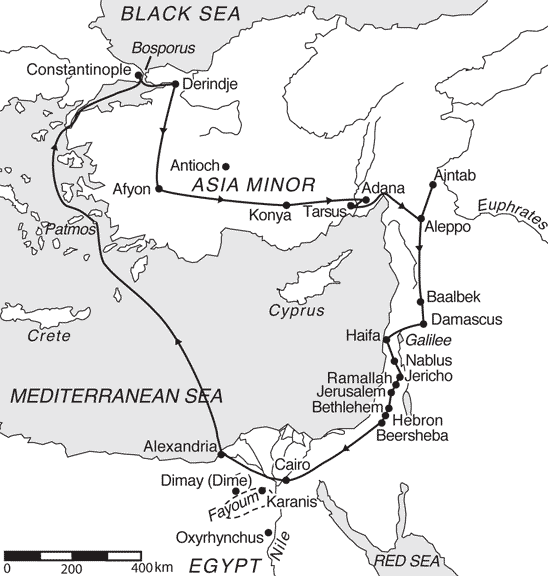
The route of Kelsey's expedition Drawing: Lorene Sterner
-
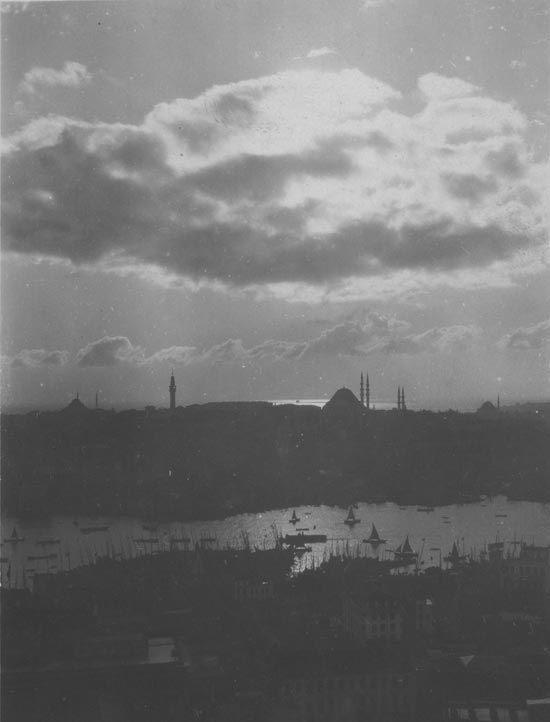
Skyline of Constantinople, December 5, 1919 Photo: George R. Swain, Kelsey Museum neg. KS044.09
-
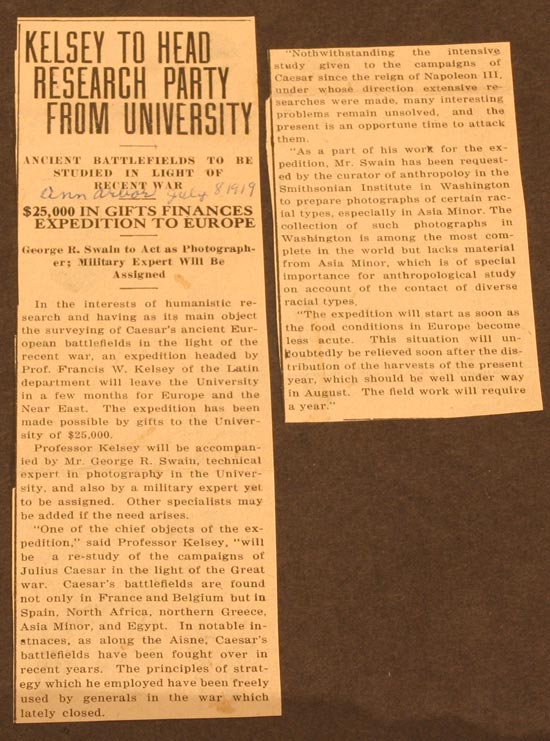
Newspaper article on the expedition Bentley Historical Library, Patricia Arthur Collection
-
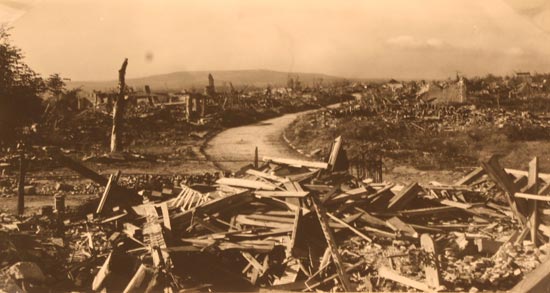
French village destroyed in World War I Bentley Historical Library, Patricia Arthur Collection
-
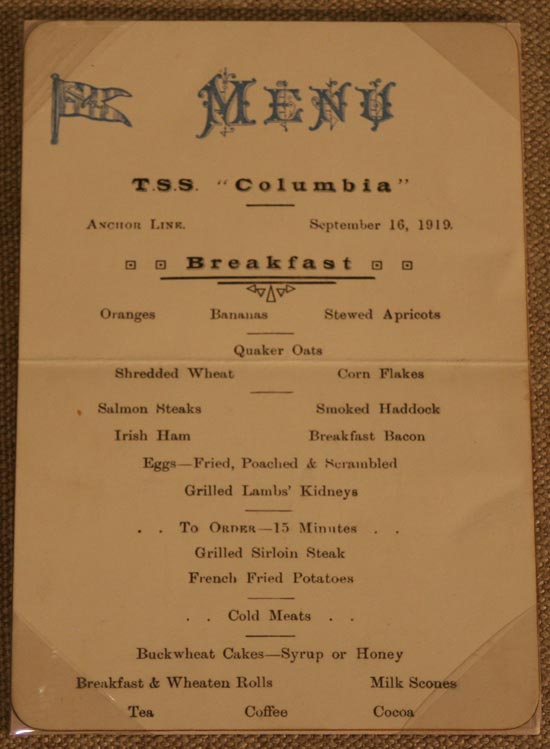
Menu from the steamship Columbia Bentley Historical Library, Kelsey Museum Papers
-
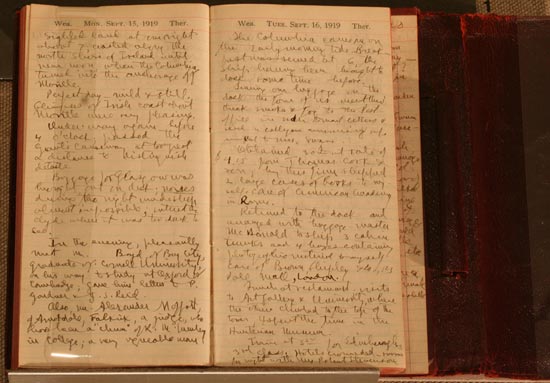
Click on the picture to enlarge
Kelsey's diary of 1919 recording the arrival of the Columbia in Glasgow Bentley Historical Library, Kelsey Museum Papers
-
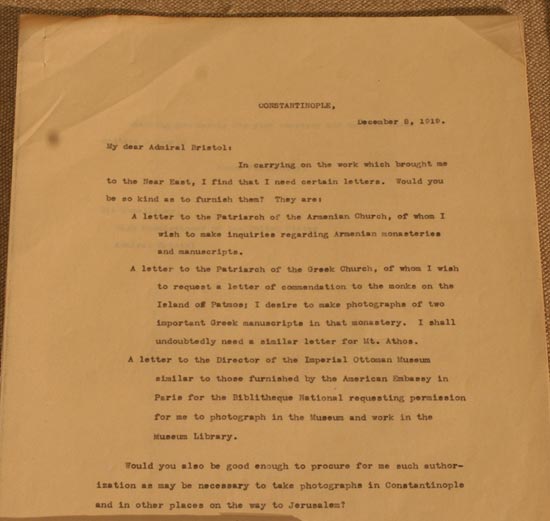
Click on the picture to enlarge
Letter from Kelsey to Admiral Bristol requesting letters of introduction Bentley Historical Library, Kelsey Museum Papers
-
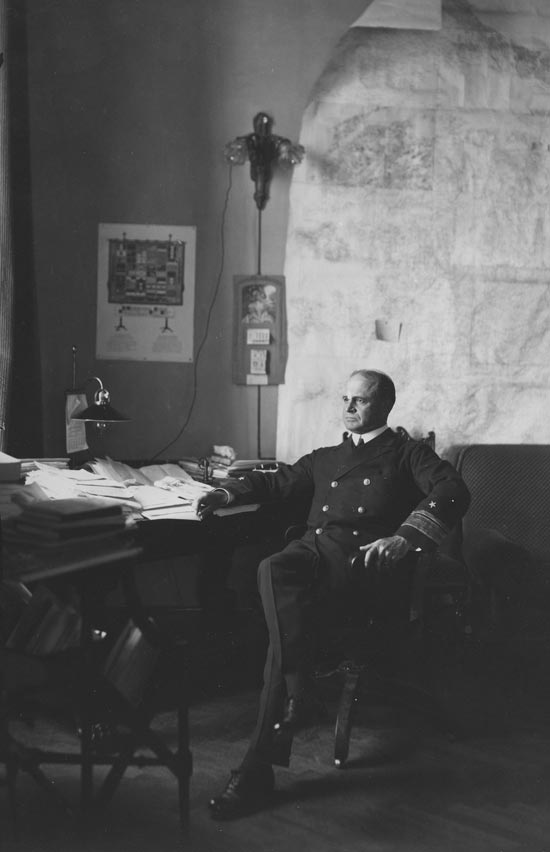
Admiral Bristol at his desk in the U.S. Embassy in Constantinople, June 15, 1920 Photo: George R. Swain, Kelsey Museum neg. 7.0569
-
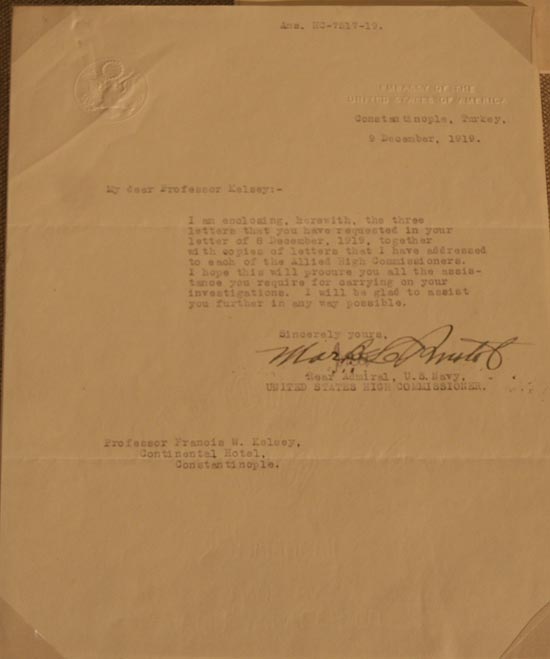
Click on the picture to enlarge
Admiral Bristol to Kelsey informing him of letters Bentley Historical Library, Kelsey Museum Papers
-
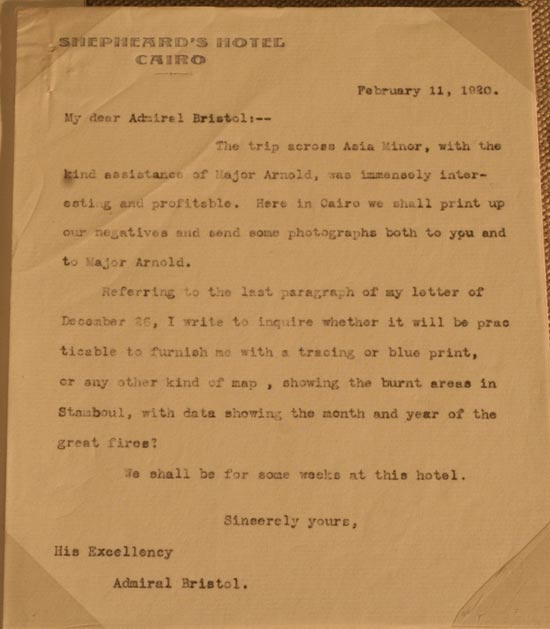
Kelsey's letter to Admiral Bristol requesting a map of the burnt areas of Constantinople Bentley Historical Library, Kelsey Museum Papers
On this expedition Kelsey identified new scholarly interests and collected materials for later publications. When he arrived in Constantinople in 1919, he was distressed to see that fires had destroyed many of the old wooden houses of the Ottoman city, leaving vast visible scars on the landscape. He wrote to Admiral Bristol, and later argued in an article, that these areas should be rebuilt on the principles of modern city planning. It was for this article that he asked Admiral Bristol to provide him a map of the burnt districts of the city.
-
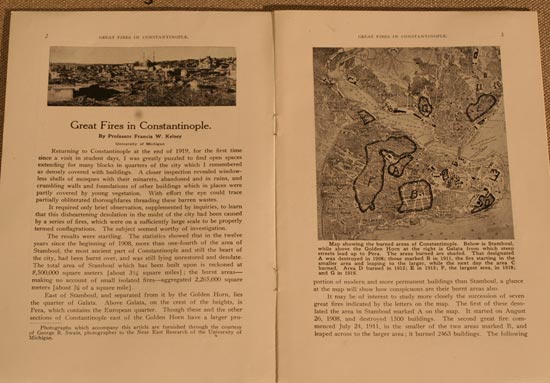
Click on the picture to enlarge
Offprint of Kelsey's article on the Fires of Constantinople Kelsey Museum Library
-
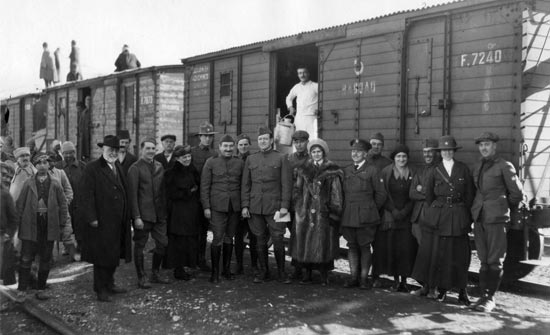
Click on the picture to enlarge
Party that traveled across Asia Minor (Turkey) on freight train, December 28, 1919 Photo: George R. Swain, Kelsey Museum neg. 7.0147
-
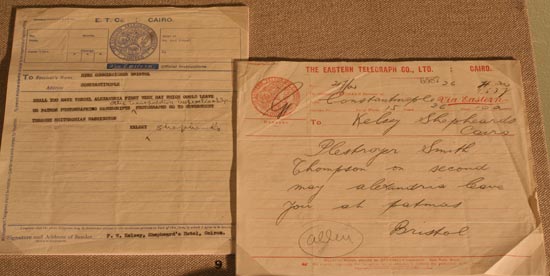
Click on the picture to enlarge
Two telegrams regarding a naval destroyer provided by Admiral Bristol to transport the Kelsey party from Alexandria, Egypt, to Patmos Bentley Historical Library, Kelsey Museum Papers
Bristol continued to assist Kelsey throughout the expedition. In 1920 Kelsey appealed to him again to provide transportation from Alexandria in Egypt to the Greek island of Patmos. Bristol complied by sending a U.S. destroyer. On Patmos Kelsey wanted to study and photograph ancient manuscripts in the library of the Monastery of St. John. It was reputedly on Patmos that John had the vision of the apocalypse that he wrote of in Revelation.
-
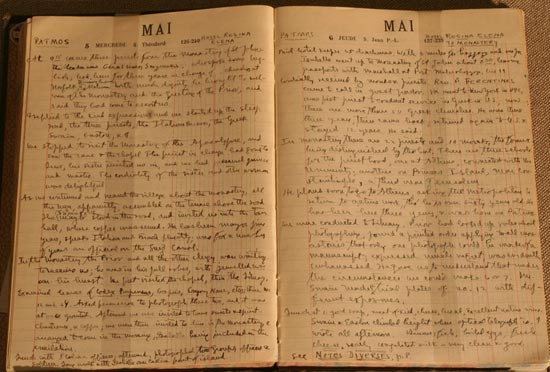
Click on the picture to enlarge
Kelsey's diary of 1920 recording the first days on Patmos Bentley Historical Library, Kelsey Museum Papers
-
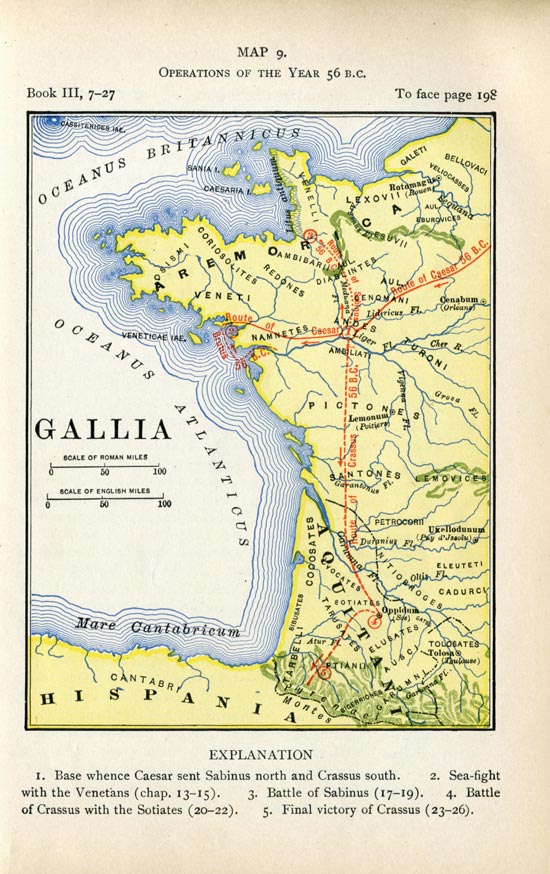
Map from Francis Kelsey's Caesar's Commentaries From F. W. Kelsey, ed., Caesar's Commentaries (1918)
-

American Committee for Relief in the Near East Eye Hospital, Aleppo, Syria, January 7, 1920 Photo: George R. Swain, Kelsey Museum neg. 7.0193
-
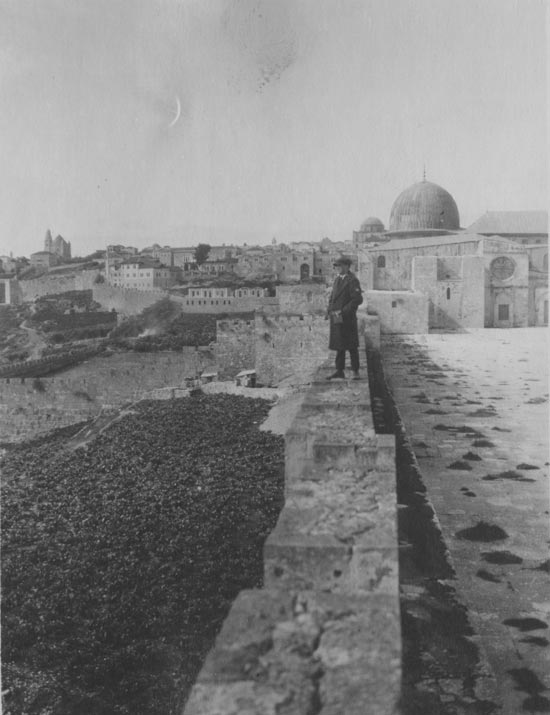
Easton Kelsey in Jerusalem, Dome of the Rock in distance. February 5, 1920 Photo: George R. Swain, Kelsey Museum neg. KS130.05
-
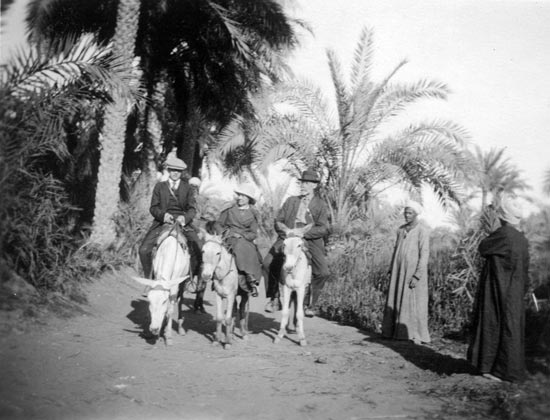
Easton Kelsey, Isabelle Kelsey, and G. R. Swain riding mules at Sakkara, Egypt, March 30, 1920 Kelsey Museum neg. KK119